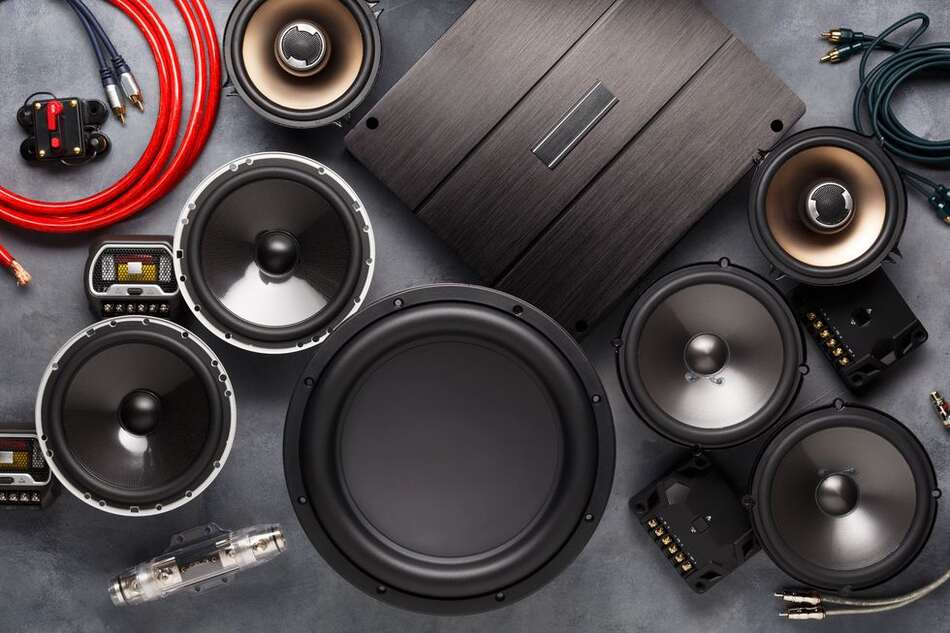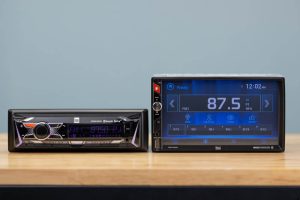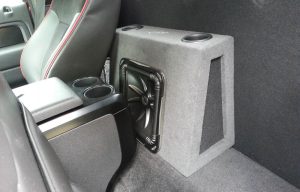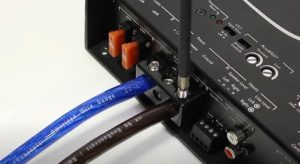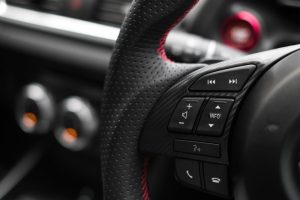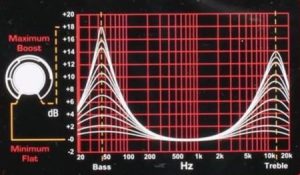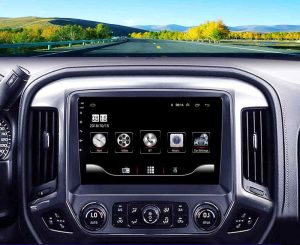Mixing speaker brands in a car audio system sparks curiosity among car enthusiasts and audiophiles alike. You might wonder if combining different brands delivers a richer sound or risks audio chaos. As someone who’s tinkered with car audio setups for years, I’ve explored the highs and lows of blending speaker brands. In this comprehensive guide, I’ll share practical insights, compatibility tips, and expert advice to help you craft a stellar car audio experience. Whether you’re upgrading your system or fine-tuning for perfection, this article covers everything you need to know about mixing speaker brands in your vehicle.
Contents
- Why Mix Speaker Brands in a Car Audio System?
- Understanding Car Speaker Types
- Key Compatibility Factors for Mixing Speaker Brands
- Benefits of Mixing Speaker Brands
- Challenges of Mixing Speaker Brands
- Expert Tips for Mixing Speaker Brands Successfully
- My Experience Mixing Speaker Brands
- Common Mistakes to Avoid
- Top Car Speaker Brands to Consider
- Can You Mix Coaxial and Component Speakers?
- Final Thoughts on Mixing Speaker Brands
Why Mix Speaker Brands in a Car Audio System?
Car audio systems transform your driving experience, turning mundane commutes into immersive concerts. Factory-installed speakers often lack the depth and clarity that aftermarket options provide. Upgrading with different speaker brands offers flexibility to tailor your sound. For instance, one brand might excel at crisp highs, while another delivers booming bass. By mixing brands, you create a custom setup that aligns with your musical tastes, whether you love rock, hip-hop, or classical.
Blending speaker brands also saves money. Instead of buying a full set from a premium brand, you can pair high-end tweeters with budget-friendly woofers. This approach maximizes quality within your budget. Plus, mixing brands lets you experiment, helping you discover unique sound profiles that a single brand might not offer. But before you dive in, understanding compatibility ensures your setup sings rather than stumbles.
Understanding Car Speaker Types
To mix speaker brands effectively, you need to know the types of speakers in a car audio system. Each serves a specific role in delivering balanced sound:
- Tweeters: These handle high-frequency sounds, like cymbals or vocals, adding clarity and detail.
- Midrange Speakers: They cover mid-frequency sounds, such as guitars or voices, ensuring a full, rich tone.
- Woofers: Designed for low frequencies, woofers produce deep bass, perfect for thumping beats.
- Subwoofers: These specialize in ultra-low frequencies, delivering powerful bass for genres like EDM or rap.
- Coaxial Speakers: Combining tweeters and woofers in one unit, these are budget-friendly and easy to install.
- Component Speakers: Separate tweeters, woofers, and crossovers offer superior sound quality and customization.
Knowing these types helps you choose complementary brands. For example, pairing a Focal tweeter with a JL Audio woofer can enhance your system’s clarity and bass response. However, compatibility factors like impedance and sensitivity play a critical role in ensuring harmony.
Key Compatibility Factors for Mixing Speaker Brands
Mixing speaker brands isn’t as simple as swapping components. Without proper alignment, you risk sound imbalance or equipment damage. Here are the essential factors to consider:
Impedance Matching
Impedance, measured in ohms, reflects a speaker’s electrical resistance. Most car speakers are 4 ohms, but some subwoofers drop to 1 or 2 ohms. Mismatched impedance between speakers and your amplifier can cause distortion or overheating. For example, pairing a 4-ohm tweeter with a 2-ohm woofer may strain your amp. Always check your amplifier’s impedance range and ensure all speakers align with it.
Power Handling
Power handling indicates how much power a speaker can safely manage, measured in watts (RMS and peak). Mixing speakers with different power ratings can lead to uneven sound. A high-powered speaker might overpower a weaker one, causing distortion or damage. For instance, if your head unit delivers 50 watts RMS per channel, choose speakers with similar RMS ratings to maintain balance.
Sensitivity Levels
Sensitivity, measured in decibels (dB), shows how efficiently a speaker converts power into sound. Speakers with higher sensitivity (e.g., 92 dB) produce louder sound with less power than those with lower sensitivity (e.g., 85 dB). Mixing speakers with vastly different sensitivity levels creates volume imbalances. To avoid this, select speakers with sensitivity ratings within 2-3 dB of each other.
Frequency Response
Frequency response defines the range of sounds a speaker can produce, typically 20 Hz to 20 kHz for full-range audio. Different brands have unique frequency profiles. For example, a tweeter from Brand A might emphasize highs above 10 kHz, while a woofer from Brand B focuses on 50-200 Hz. Ensure the combined frequency ranges cover the full spectrum without gaps or overlaps.
Crossover Settings
Crossovers direct specific frequencies to the right speakers—highs to tweeters, lows to woofers. When mixing brands, improperly set crossovers can cause frequency overlap, muddying the sound. Use a digital sound processor (DSP) or adjustable crossovers to fine-tune frequency distribution. This ensures each speaker plays its intended role, creating a cohesive soundstage.
Benefits of Mixing Speaker Brands
Blending speaker brands unlocks several advantages for car audio enthusiasts. Here’s why it’s worth considering:
- Customization: Mix and match brands to prioritize what matters most—crisp vocals, deep bass, or balanced mids. For example, I paired Morel tweeters with Kicker woofers to achieve sparkling highs and punchy lows.
- Cost Savings: High-end brands like Focal or JL Audio can be pricey. Mixing them with affordable brands like Pioneer or Kenwood stretches your budget without sacrificing quality.
- Unique Sound Profiles: Each brand has a distinct sound signature. Combining them creates a personalized audio experience that stands out from single-brand setups.
- Flexibility: If you already own quality speakers from one brand, you can upgrade specific components (e.g., tweeters) from another without replacing everything.
In my experience, mixing brands elevated my car’s audio from flat to phenomenal. By selecting complementary components, I crafted a system that rivals high-end single-brand setups at half the cost.
Challenges of Mixing Speaker Brands
While mixing brands offers benefits, it comes with hurdles. Being aware of these challenges helps you plan effectively:
- Sound Signature Differences: Brands have unique tonal qualities. A bright tweeter paired with a warm woofer can sound disjointed. Test combinations to ensure they blend well.
- Tuning Complexity: Achieving balance requires precise tuning. You may need a DSP or equalizer to adjust frequencies, which demands time and expertise.
- Compatibility Issues: Mismatched impedance, power handling, or sensitivity can harm performance or equipment. Thorough research prevents costly mistakes.
- Warranty Concerns: Some manufacturers offer warranties only for full systems. Mixing brands may complicate support if issues arise.
Despite these challenges, careful planning and testing can yield outstanding results. My setup, for instance, required hours of tweaking but now delivers concert-like audio.
Expert Tips for Mixing Speaker Brands Successfully
To create a harmonious car audio system with mixed brands, follow these practical tips:
- Research Thoroughly: Compare speaker specs—impedance, sensitivity, power handling, and frequency response. Websites like Crutchfield or Sonic Electronix offer detailed specs and fit guides.
- Test Before Installing: Temporarily connect speakers to assess sound quality. This prevents permanent installations that don’t meet expectations.
- Match Front Speakers: Use the same brand or series for front speakers (tweeters and mids) to ensure a cohesive soundstage. Rear speakers are less critical and can vary.
- Invest in a DSP: A digital sound processor fine-tunes time alignment, EQ, and crossovers, blending different brands seamlessly.
- Choose Reputable Brands: Stick to trusted names like JBL, Kenwood, Pioneer, Focal, or JL Audio. Their consistent quality reduces compatibility risks.
- Consult Professionals: If you’re unsure, a car audio installer can recommend compatible brands and optimize your setup.
- Use Quality Wiring: High-gauge wiring and secure connections minimize signal loss, ensuring all speakers perform at their best.
- Balance Sensitivity: Pair speakers with similar sensitivity ratings to maintain even volume levels across channels.
By following these steps, you’ll avoid common pitfalls and create a system that sounds incredible. For example, I used a DSP to align a Sony tweeter with a Rockford Fosgate woofer, resulting in a balanced, dynamic sound.
My Experience Mixing Speaker Brands
In my car, I experimented with a hybrid setup: Focal tweeters for crystalline highs, JL Audio midrange for warm vocals, and a Kicker subwoofer for earth-shaking bass. Initially, the sound felt uneven due to sensitivity mismatches. After investing in a DSP and tweaking crossover points, the system came alive. The clarity of vocals paired with deep, controlled bass made every drive a joy. This experience taught me that mixing brands works, but it demands patience and precision.
Common Mistakes to Avoid
Steer clear of these pitfalls when mixing speaker brands:
- Ignoring Specs: Failing to match impedance, power handling, or sensitivity leads to poor sound or damage.
- Skipping Crossovers: Without proper crossover settings, frequencies overlap, creating muddy audio.
- Poor Installation: Loose mounts or faulty wiring degrade performance. Use sound-deadening materials to reduce vibrations.
- Overlooking Testing: Always test your setup before finalizing installation to catch issues early.
Avoiding these mistakes saves time, money, and frustration, ensuring your system performs at its peak.
Top Car Speaker Brands to Consider
When mixing speakers, choosing reliable brands sets you up for success. Here are five top picks for 2025, known for quality and performance:
- Pioneer: Offers durable coaxial and component speakers with clear sound and efficient IMPP cones.
- Kenwood: Known for innovative hybrid surround technology, delivering crisp audio at affordable prices.
- JBL: Excels in powerful bass and vibrant highs, ideal for coaxial setups.
- Focal: Premium component speakers with exceptional clarity, perfect for audiophiles.
- JL Audio: Renowned for robust subwoofers and detailed midrange drivers.
Mixing these brands strategically—for example, Focal tweeters with JL Audio subwoofers—can create a dynamic, high-fidelity system.
Can You Mix Coaxial and Component Speakers?
A common question is whether you can mix coaxial and component speakers. While possible, it’s tricky. Coaxial speakers combine tweeters and woofers in one unit, while component speakers separate them for better sound staging. Mixing them (e.g., components in front, coaxials in rear) can work if you prioritize front audio. However, differences in sound quality and timing may require a DSP for alignment. For audiophiles, sticking to one type ensures consistency, but casual listeners can mix with careful tuning.
Final Thoughts on Mixing Speaker Brands
Mixing speaker brands in a car audio system opens a world of customization, letting you craft a sound that matches your style and budget. While challenges like compatibility and tuning exist, thorough research and strategic planning yield impressive results. By matching impedance, sensitivity, and power handling, and using tools like DSPs, you can create a system that rivals professional setups. Whether you’re a casual listener or a dedicated audiophile, blending brands offers a path to audio excellence.
Ready to upgrade your car’s sound? Start by researching speaker specs, testing combinations, and consulting experts if needed. With the right approach, your mixed-brand system will turn every drive into a musical adventure.
